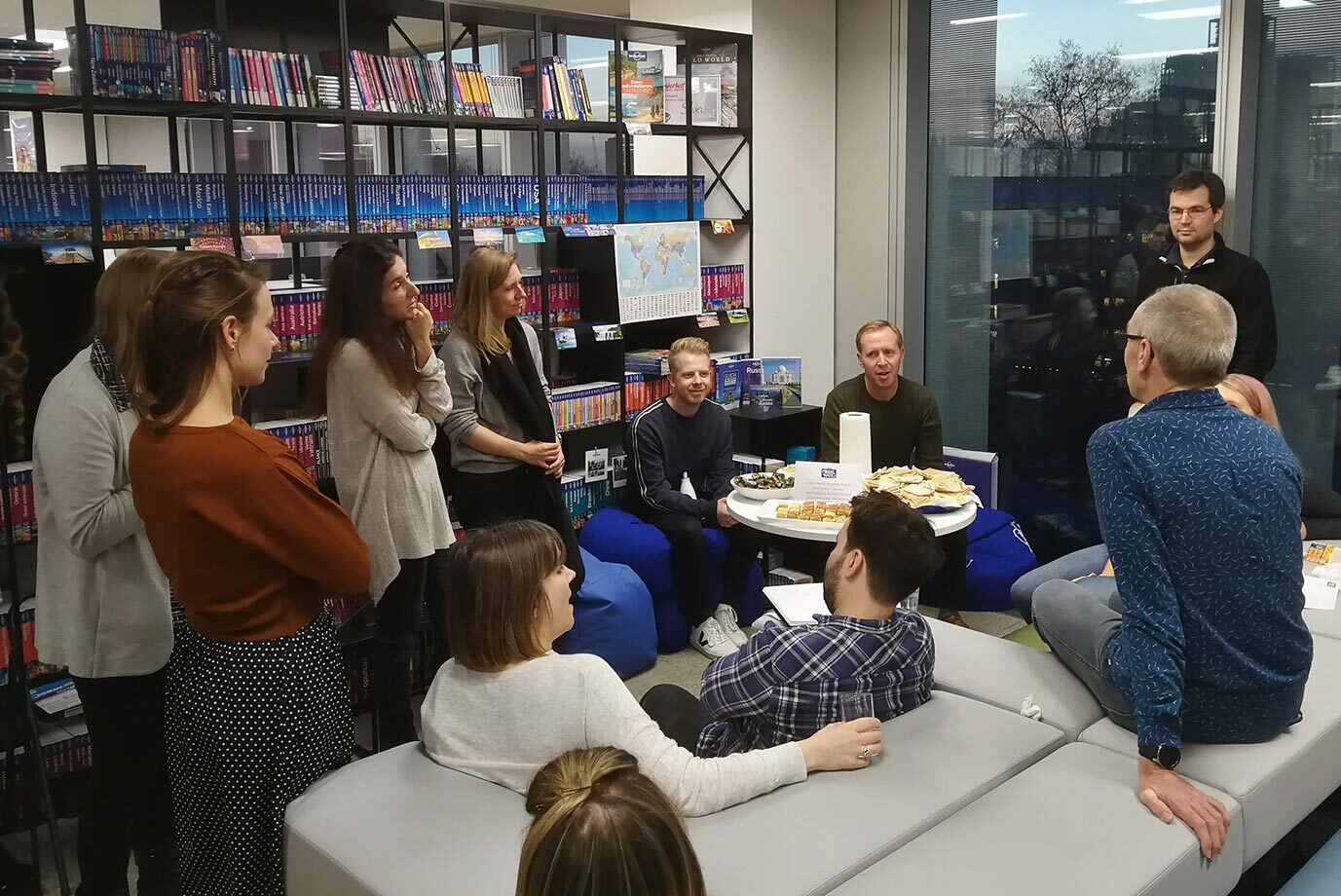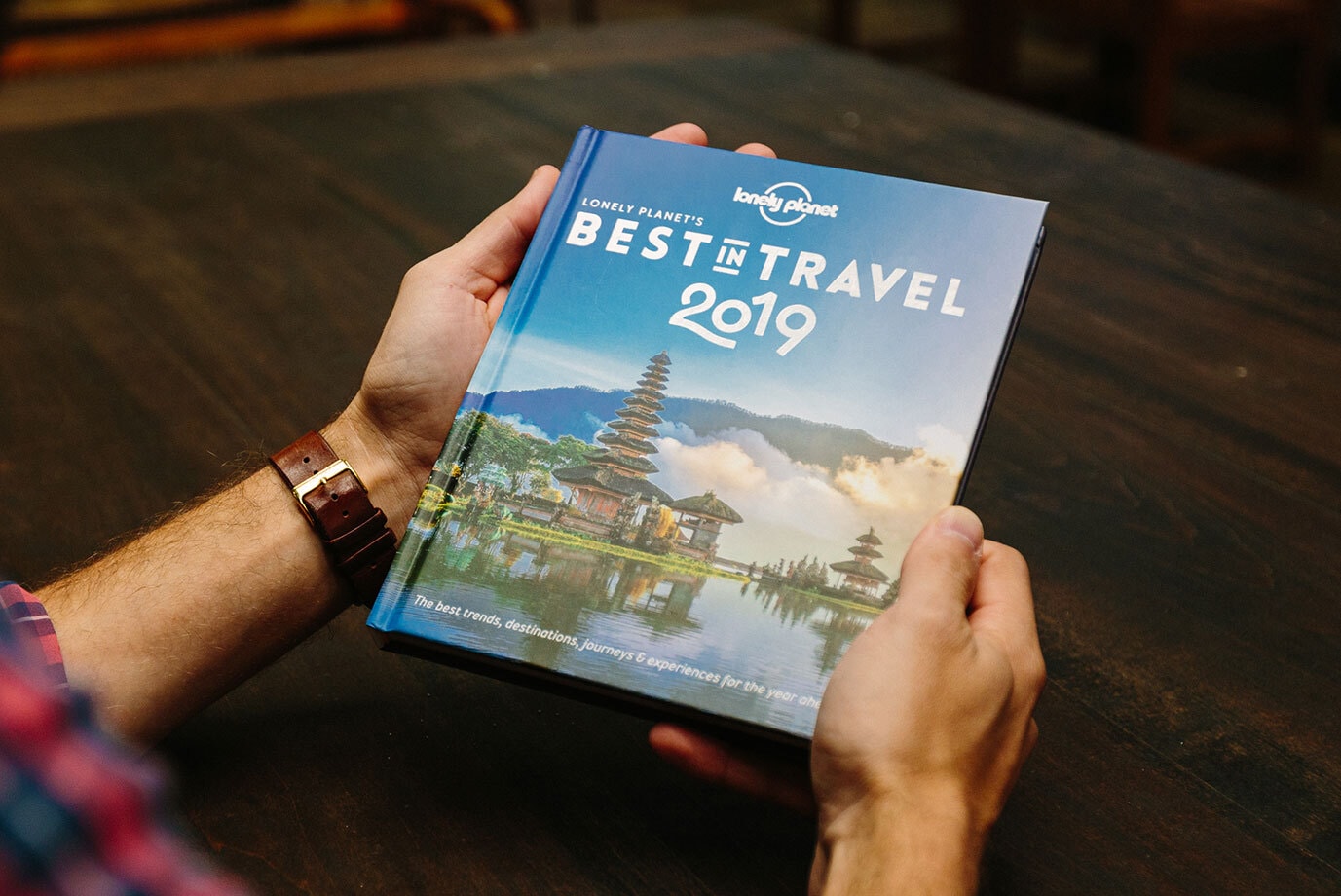The world has never been a smaller place. For a decade and a half, Lonely Planet has released its annual Best in Travel list, featuring all the places you should consider visiting in the coming year. The list includes both under-the-radar locales and familiar places viewed through a new lens.
Since its start, the collection quickly blossomed from a book to the web, with content shared across all of Lonely Planet’s channels: social, video, magazines, and apps (available in 15 different languages). It’s the main driver in the brand’s initiative to spread the gospel of how exploring the world, responsibly, can be a force for good.
When the yearly campaign first began, there were no efficient, ready-made platforms for connecting all the diverse experiences and insider knowledge held by hundreds of employees and contributors worldwide. But as one of Slack’s earliest customers, the Lonely Planet team has distilled global collaboration down to an artful science by using the app to collectively pull back every curtain to find the best city (this year, that’s Copenhagen), country (Sri Lanka), and region (Piedmont, Italy), and the best-value destination (the Southern Nile Valley, Egypt), to visit in the coming year.
We caught up with Sebastian Neylan, the company’s director of online marketing and the project lead for Best in Travel, to get a behind-the-scenes look at how the team uses Slack to make a lonely planet quite the opposite.
The big survey
For travelers, January is typically the time to plan adventures for the year ahead. For the team at Lonely Planet, however, it means looking a full calendar year in the future. A company-wide call for Best in Travel nominations is placed in the #every1atlp Slack channel. This creates a rallying point and ensures that there’s excitement throughout the company—from the CEO down to the editorial assistants—for the biggest campaign of the year. Their mission: rack their well-traveled brains and networks for the most buzzworthy destinations a year out. That could mean cutting the ribbon on a new art museum or international airport (putting Dakar, Senegal, on the Best in Travel map) or an anniversary that’s cause for country-wide celebration (like Panama City’s 500th birthday party in 2019).

“We want to make people think a bit off the beaten track, or perhaps on the beaten track but in a different way,” Neylan explains.
Lonely Planet’s global network is the key to breaking through cultural silos and getting an accurate sense of what travelers outside predominantly English-speaking countries are thinking about. The team even reaches out via email to solicit feedback and ideas from erstwhile contributors. “Instead of thinking, ‘I’ve been to Italy a bunch of times,’ you’re getting a local’s take on a different area of their country which you never would have thought of,” Neylan says.
Travel hack days
To set the mood for the coming sprint, each office—from Melbourne to London to Nashville to New Delhi and beyond—hosts a Travel Hack day. Everyone designs location-based themes for the party, compares notes on where family and friends are traveling in the year ahead, and brainstorms potential picks for the official list.

Food plays a huge part, with employees from every department contributing snacks that draw their inspiration from last year’s destinations (say, coney dogs from Detroit, Fischbrötchen from Hamburg, and sparkling wine from Languedoc-Roussillon). Each office hops into Slack to share photos and insights from the day, turning single-office creative exercises into what Neylan calls “a global collaborative event.” When the hack days come to a close, Lonely Planet is left with more than 1,000 destinations and travel trends to sort through.
As an added consideration, the panel evaluates whether there’s a familiar place travelers can experience in an unfamiliar way. “In previous years, we’ve had Venice in the Best Value list,” says Neylan. “You typically wouldn’t think of Venice [as a value destination], but we recommended visiting in the off season. Because you aren’t just avoiding all the tourism; you’re actually helping. We don’t want to just get people to travel. We want to get people to travel responsibly.”
The home stretch to publication
When the judges give their seal of approval to the final lists, the cross-functional work begins. Editorial, marketing, design, social media, and project management come together in a single project channel (most recently, #best-in-travel-2019). Here, all parties iterate on mockups, circulate Google Docs for project feedback, share status updates, and align on the launch plan.
The run-up to publication is often the most frenetic period for any media entity, with people scurrying to fix last-minute bugs and make final tweaks to the landing page. The official list is under embargo until its mid-October launch, and one lucky national outlet (most recently, CNN) commands the exclusive scoop.
In workplaces that handle QA over email, the rush to meet their media placement deadline can feel heavy on the demands and light on the affirmation. But Lonely Planet has established the digital equivalent of a pat on the back as teammates rally together, no matter their time zone. “Everyone is adding little emojis of 💪 and 💯 icons,” Neylan says. “That level of recognizing contribution helps. It keeps everyone going.”

With the annual list out the door, the project channel transitions into a home for metrics updates and sharing press coverage and lessons that can improve the campaign in the future. The Best in Travel print book hits the shelves, and when employees spot it in the wild, they share photos in a #bookstore-photos channel. But for the Best in Travel team, the world doesn’t stop spinning for long. Come the first week of January, they’ll begin the search for the next list of surprising, wanderlust-inspiring destinations. “Everything we do culminates in Best in Travel,” Neylan says.















